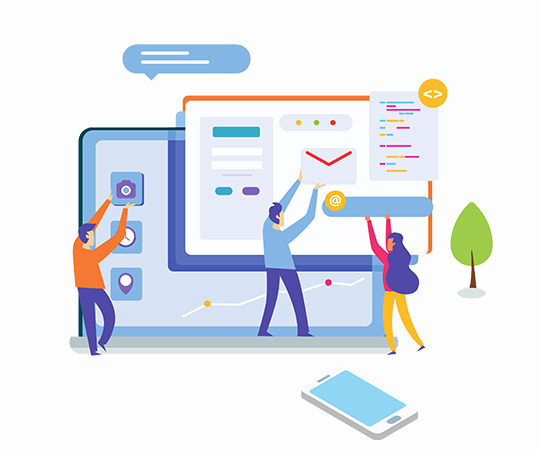Binary-coded decimal (BCD) is a binary-based representation of decimal numbers. Decimal numbers are encoded using this technique in digital electronics and computing to make them easier for digital systems to handle. Furthermore, the BCD system, which represents each digit of a decimal number with a 4-bit binary code, enables a straightforward conversion between binary and decimal values.
What is BCD?
Using a 4-bit binary number, each decimal digit in BCD is encoded. The BCD representation of the decimal digits 0 through 9 is as follows, for instance:
0: 0000
1: 0001
2: 0010
3: 0011
4: 0100
5: 0101
6: 0110
7: 0111
8: 1000
9: 1001
The primary advantage of BCD is its ease of conversion between binary and decimal representations without complex mathematical operations. This post on Cookape.com has explained the BCD system in Detail.
Conversion from BCD to Decimal
Converting BCD to decimal involves interpreting each group of four binary bits as a separate decimal digit. For example, consider the BCD number 1001 0110:
To convert this BCD number to decimal:
- Separate the bits into groups of four: 1001 | 0110
- Convert each group of four bits to its decimal equivalent:
- 1001 in BCD represents the decimal number 9.
- 0110 in BCD represents the decimal number 6.
- Combine the decimal numbers obtained: 96
Therefore, the BCD number 1001 0110 is equivalent to the decimal number 96.
Let’s dive into Unraveling the Transition from Binary Coded Decimal to Decimal
Understanding BCD Representation
The process of converting a BCD number to decimal involves grouping the number into nibbles, or four-bit groups, and then converting each nibble into its corresponding decimal value. By understanding the decimal values associated with each BCD nibble, one can piece together the original decimal number. Furthermore, consider the BCD number 1001 0110 as an example. In addition, divide 96 into two nibbles (1001 and 0110) and convert each nibble separately to get the decimal equivalent.
Conversion Process Demystified
The process of converting a BCD number to decimal involves grouping the number into nibbles, or four-bit groups, and then converting each nibble into its corresponding decimal value. One can reassemble the original decimal number by knowing the decimal values connected to each BCD nibble. Moreover, take the BCD number 1001 0110, for instance. Furthermore, the division into two nibbles (1001 and 0110) yields the decimal equivalent of 96, which is then converted independently for each nibble.
Even in the present era, BCD is still essential for certain tasks, like financial computations, where decimal representation accuracy is critical. Moreover, it is also useful in industrial control systems and digital displays.
Practical Examples of Conversion
Let’s translate 0011 1000, another BCD number, to decimal. By splitting it into 0011 and 1000, we can convert these nibbles to decimal, which equals 38. In addition, this methodical conversion shows how easy it is to convert BCD to decimal.
Significance and Applications
Converting from BCD to decimal has applications in many different domains. BCD’s close relationship to decimal numbers made it useful in early computing systems. Even in the present era, BCD is still essential for certain tasks, like financial computations, where decimal representation accuracy is critical. Moreover, it is also useful in industrial control systems and digital displays.
The process of converting BCD and Conversion to Decimal is widely applicable across various fields. The strong correlation between BCD and decimal numbers rendered it advantageous in the early stages of computing systems. BCD is indispensable in specific applications, such as financial computations, where precision in decimal representation is crucial, even in the current period. Furthermore, it is also beneficial in the realm of industrial control systems and digital displays.
Challenges and Advancements
Although BCD makes decimal representation easier, problems like inefficient storage and computational complexity still exist. However, these worries have been allayed by developments in algorithms and hardware. Furthermore, computational efficiency has been increased by streamlining the conversion of BCD to decimal through the use of specialized hardware and optimized algorithms.
Conclusion
Binary-coded decimal (BCD) is a binary representation of decimal numbers that uses a 4-bit binary code to encode each decimal digit. Converting BCD to decimal involves grouping the bits into sets of four and interpreting each set as a decimal digit.
While BCD has lost prominence in mainstream computing, it still holds significance in specific fields where exact decimal representation is vital. Understanding BCD and its conversion to decimal remains fundamental in the realm of digital systems, electronics, and Biocentrism Debunked.
The simplicity of BCD encoding provides a foundational understanding of number representation in computing, serving as an essential concept in the history and development of digital technology.
As technology advances, BCD serves as a reminder of the fundamental ideas that underpin contemporary computer systems.Even in the present era, BCD is still essential for certain tasks, like financial computations, where decimal representation accuracy is critical. Moreover, it is also useful in industrial control systems and digital displays.




